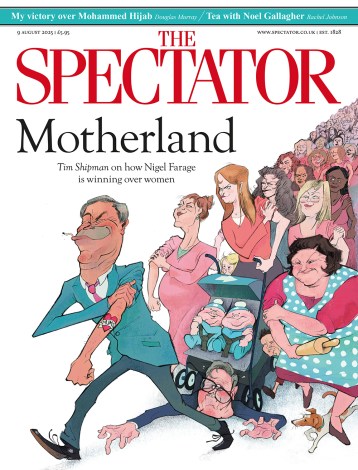The University of Edinburgh’s recently released ‘Race Review’ is an intriguing document. Commissioned after the death of George Floyd and the Black Lives Matter protests, you would think it would look at present problems with racism at the university. Why bother otherwise, if there are no issues to solve now?
The report implies that people inherit their moral relationships from their ancestors. This is barbaric
Yet the race review, titled ‘Decolonised Transformations: Confronting the University of Edinburgh’s History and Legacies of Enslavement and Colonialism’, does not look at staff or student grievances or complaints, or employment tribunals around matters of race, which would be the surest evidence of a problem.
The part of the report that deals most directly with the present is primarily based on administrative data on the ethnic and racial distributions of staff and students at the university, and two attitudinal questionnaires.
The demographic survey finds that between 2018 and 2023, among both students and staff, proportions of whites decreased, Asians increased, and Blacks and ‘others’ were relatively stable at around 7 per cent (staff) and 10 per cent (students). The report expresses its concern that the numbers of ‘blacks and others’ aren’t growing, but there is no argument about what this number should be, and why. No evidence is presented of internal institutional obstacles to increasing staff or student numbers in these categories, and there is no reason given to think that this distribution is not a result of qualified people in those categories simply not choosing to come to Edinburgh, either as staff or students.
The two questionnaires administered sought to measure ‘experiences’ of racism among staff and students. They were based on a very small, self-selected sample lacking any statistical reliability. The actual questions asked (hidden in the report) are generally leading, and are about perceptions of racism, rather than any objective evidence of racism. The data is presented in an opaque way and is inconclusive.
The quantitative part is preceded by a discussion of the university’s history, but the scholarship is generally inadequate. It claims to be revealing hidden aspects of Enlightenment history, its dark underbelly, but provides nothing that isn’t already well-known, beyond some specifics about Edinburgh found in the archives. Scholars have been writing critically and analytically about ‘scientific racism’ for decades. (See, for instance, Nancy Stepan’s 1982 book The Idea of Race in Science: Great Britain, 1800-1969.) The report tends to focus not on the 18th century, but on the early 19th century, which was the period of Romanticism as much as it was the wake of the Enlightenment.
The language of the historical part of the report is also misleading, suggesting not just that racist theories were present (no one would deny it), but that Edinburgh played an ‘outsized’ role, and was a ‘haven’ for racists. Such claims would have to be supported by comparison to other universities around Europe and America, and this is not done. It is merely rhetoric.
The confusion about its topic goes deeper. The report treats ‘scientific racism’ as if it were the same thing as ideas about the development of subsistence, technology, urbanisation and communication (then described as stages of ‘savagery, barbarism, and civilisation’). They are not. Good science, born of the Enlightenment, has undermined the crude ‘scientific’ racism of the time. But while we no longer use the terminology of savagery and barbarism, the idea that human societies have evolved in levels of technology and social complexity is robust and still used by archaeologists, anthropologists and other social scientists. The report is misleading in its conflation of these different sets of ideas around ‘race’ and ‘social evolution’, treating it all as one big glob of racism. Good scholarship investigates such distinctions, it doesn’t obscure them.
The general approach to history in the entire section has this loose, ‘connect-the-dots’ quality. A discussion of A. J. Balfour, a chancellor of the university and author of the Balfour Declaration, is shoehorned into the history, suggesting the university’s guilt by association with this politician. It simply assumes that an extreme pro-Palestinian and anti-Israel position is correct, and that the university doesn’t measure up to it. It does not acknowledge diverse views at Edinburgh on this controversy. Utterances of former students are, by implication, the responsibility of the university. Early on it is argued that various endowments which used wealth deriving from slavery and colonialism – some continuing to the present – render the university complicit in racism to this day. But any continuing funding streams of this sort support the university’s activities without any ethnic or racial biases. The historical origins of these funds are irrelevant to their fairness in the present.
So, the quantitative and historical arguments are poorly developed, and don’t add up to much. But that is beside the point, because the real underlying argument shaping this report is a moral one. Racial and ethnic groups are conceived as unified and transhistorical. If members of certain groups were privileged or harmed in the past, then this must be continuing into the present. The report implies that people inherit their moral relationships from their ancestors. This is barbaric. It is a moral view characteristic of clan societies and criminal gangs, sunk in endless feuding. In modern liberal legal systems, moral responsibility attaches to individuals, not social categories. We do not hold children responsible for the crimes of their grandparents, nor do we punish innocent people if their guilty cousins are unavailable for punishment. The argument rests on flawed abstract reasoning, not matters of fact.
This report largely repeats well-known history about now-rejected racial ideology, and when it finds little evidence of racial discrimination in the present, it concocts an ‘argument’ that the past must still bear down upon us, otherwise we cannot validate the claim of racial injustice in the present. The quality of scholarship is poor, and the arguments tendentious. The best response would be to politely ignore it, and hope the authors do better next time.







Comments